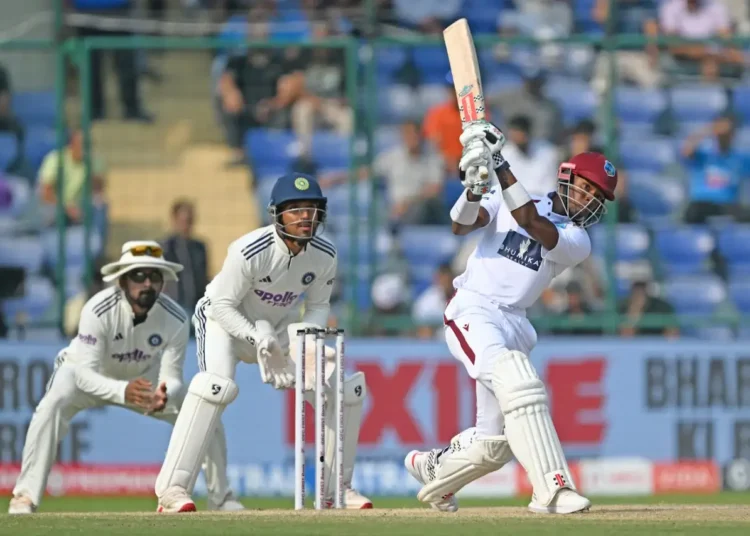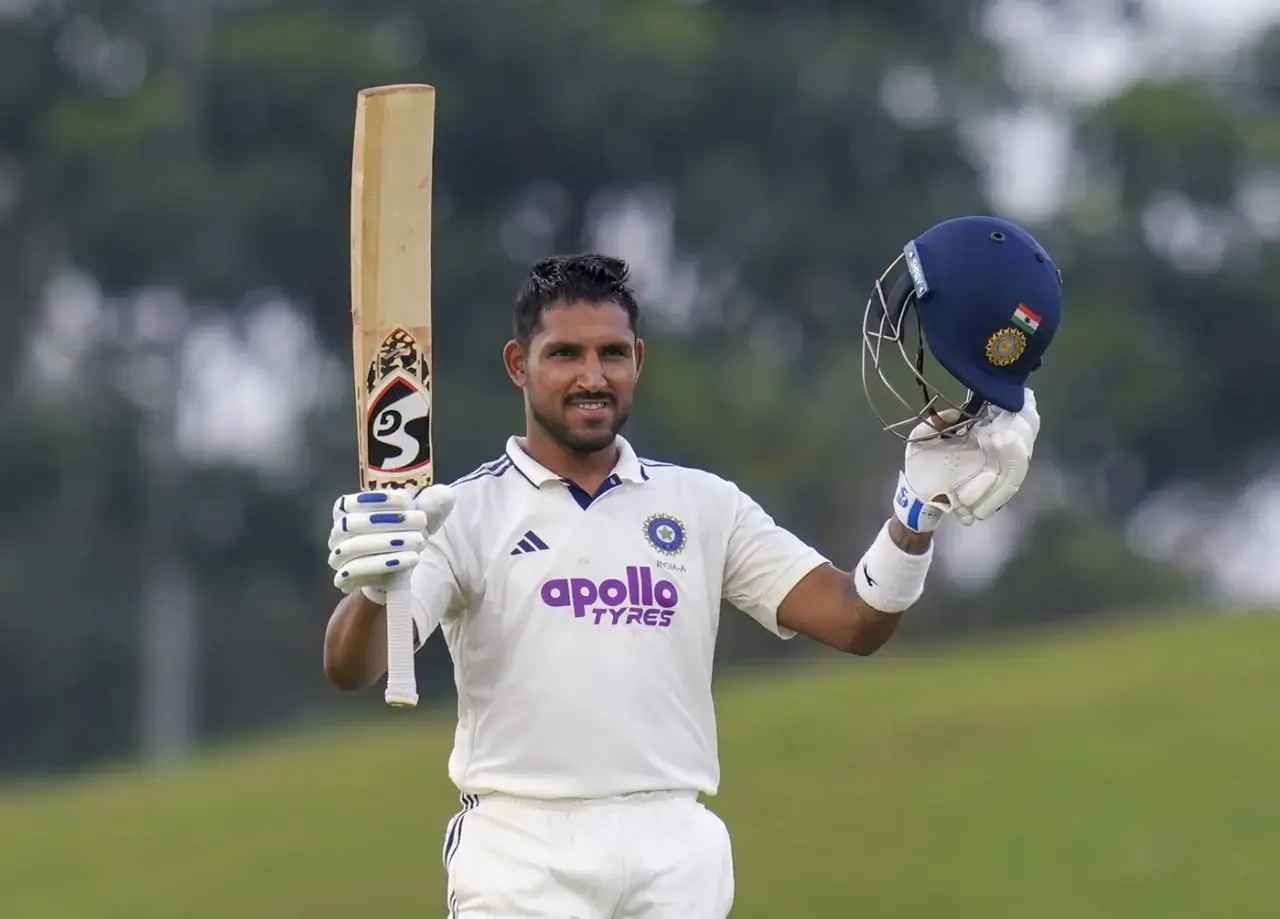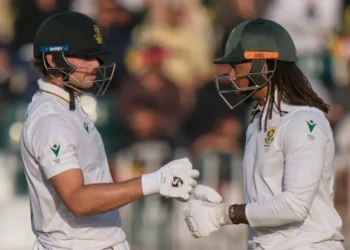Dhruv Jurel has made himself impossible to drop from the Indian setup. His consistent Test performances and sharp first-class form have created a new problem for selectors. Usually, India never fields two keepers in a single playing XI. But Jurel’s batting growth now challenges that long-standing tradition in serious fashion.
He started as a promising wicketkeeper-batter during the Under-19 World Cup. Back then, he spoke openly about wanting to play 200 Tests for India. That ambition once sounded distant, even unrealistic. But his current progress shows how far determination and skill can carry a young cricketer.
Since Rishabh Pant’s injury, Jurel has stepped into the Test side with maturity. He has batted with calmness, patience, and strong technique. Every time he’s played, he’s looked ready for big cricket. Those who watched him against the West Indies saw rare poise and control for his age.
Now, with Pant back, selectors face a real question. Can Jurel’s current batting form be ignored simply because he’s also a keeper? Or has he crossed that line where he must play even as a specialist batter? Let’s explore how Dhruv Jurel’s batting impact now shapes India’s selection decisions.
Why Jurel’s Form Has Redefined India’s Selection Logic?
Since September, Jurel has been in the form of his life. His scores — 125, 132*, 127* — have pushed his first-class average above 58. Those aren’t just numbers; they show his ability to bat long and smart. When India A needed runs against South Africa A, he stood tall where others failed.
He has mastered conditions from slow turners to green-top wickets. Against quality attacks, Jurel handled both swing and spin with quiet assurance. That temperament is what makes selectors take notice beyond his keeping skills. A keeper who bats like a specialist becomes too valuable to bench.
In India’s current mix, Nitish Kumar Reddy is still developing as an allrounder. He offers a bowling option but not consistent middle-order runs yet. Jurel, on the other hand, adds real batting value against strong bowling units. Against South Africa’s Rabada and Maharaj, that depth could be crucial.
The question isn’t about replacing someone, it’s about using talent better. If India already has five bowlers, adding a run-making specialist is logical. And Jurel’s record shows he’s ready to shoulder that responsibility. His rise forces India to think beyond fixed roles and consider form first.
Two Keepers, One XI: A Risk Worth Taking
India rarely plays two wicketkeepers in the same Test side. History shows only Budhi Kunderan and Dinesh Karthik doing it successfully. But those choices came during unique circumstances, not planned selection experiments. Now, Jurel gives India a stronger reason to repeat that pattern.
Pant’s place is undisputed as the main keeper. But Jurel’s batting makes him a specialist candidate in the top seven. That adds flexibility and proven temperament to the line-up. He has already batted above allrounders, fitting naturally into the middle order.
If Jurel plays as a pure batter, he eases pressure on Pant and the tail. He brings control, rotation, and runs in testing phases. In matches decided by partnerships, that composure is a rare gift. For a young player, he already looks like a long-term asset, not a backup.
Selectors must communicate his role clearly so it doesn’t create confusion. Defining his position will help him grow without unnecessary expectations. Two keepers can coexist if one’s bat adds more than another’s extra bowler. That’s where Jurel makes a difference — he strengthens India’s batting safety net.
What Jurel’s Consistency Means For India’s Middle Order?
In modern cricket, consistency separates good players from indispensable ones. Jurel’s runs haven’t come in easy situations. He has built innings when the team needed partnerships most. That quality makes him invaluable against competitive attacks like South Africa’s.
Devdutt Padikkal also has strong credentials as a specialist batter. But his role usually comes higher up the order. Jurel, by contrast, suits the No. 5 or No. 6 spot perfectly. That makes him more adaptable to game scenarios, especially on Indian tracks.
The real challenge for selectors is defining priorities. Do they pick based on potential or proven match impact? Dhruv Jurel’s match-winning performances already tilt that answer his way. Every innings adds more reason to trust him under pressure.
Including him as a specialist doesn’t just reward form — it rewards balance. Teams that blend form, stability, and versatility often dominate Tests. Jurel’s rise may mark the start of that strategic shift for India. His bat may soon matter as much as his gloves ever did.
Why India Can’t Ignore This Opportunity?
Indian cricket has often hesitated to reward short-term peaks. But Jurel’s rise isn’t just a purple patch; it’s a progression. He has shown growth, adaptability, and the hunger for tougher challenges. That consistency makes him more than just a stand-in for Pant.
He fits a long-term structure where batting depth defines team success. In-home conditions, he strengthens India’s resistance against early collapses. Abroad, his technique suits seaming tracks and bouncy surfaces alike. That flexibility adds immense value to future tours and transitions.
Selectors rarely get players who combine patience with counterattack so early. Ignoring that form could cost the team crucial runs and rhythm. India needs steady, fearless middle-order players who can handle pressure calmly. Dhruv Jurel’s temperament matches that description perfectly at just the right time.
This opportunity might shape India’s batting evolution for years ahead. Picking him sends a clear message: performance earns trust, not reputation. For a young player like Jurel, that’s the most powerful validation possible.
Dhruv Jurel Special
Jurel’s journey from a young wicketkeeper-batter to a dependable middle-order force has changed how India views dual-role players. Once seen as Rishabh Pant’s understudy, Jurel now bats with the maturity of a senior player. His recent first-class hundreds and calmness under pressure have made him indispensable.
Selectors now face the unusual question — can India afford to bench him even when Pant is fit? This transformation didn’t happen overnight. It came through consistent India A performances, hunger for runs, and unwavering focus.
Every inning has strengthened his case to be more than just a backup. Jurel has become a symbol of India’s next-gen batting evolution — driven by technique, timing, and temperament.
Conclusion
Dhruv Jurel’s story now represents much more than a keeper’s breakthrough. His batting has turned into a selection headache that good teams love to have. When a backup player forces his way in through sheer performance, that’s a healthy sign. It shows competition, depth, and belief in merit.
If India wants a stronger, more reliable batting order, Jurel fits in naturally. He brings patience, technical precision, and a game sense beyond his years. Whether he keeps or not, his runs make India more competitive instantly. That balance matters more than labels like “keeper” or “specialist.”
The selectors’ decision will define how boldly they embrace form over tradition. Pant will keep, but Jurel can strengthen India’s batting spine further. He’s too composed, too adaptable, and simply too good to bench again.
For Indian cricket, this is a welcome challenge — a chance to evolve selection logic. If they trust his ability, Jurel can become a key middle-order figure. The next series could mark that beginning, where Dhruv Jurel truly cements his Test identity.
















